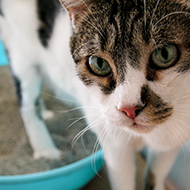Study sheds light on feline perineal urethrostomy

Twenty-four male cats with lower urinary tract infections underwent the procedure.
New research published in the Journal of Small Animal Practice (JSAP) suggests that it might be possible to predict the likelihood of re-obstruction following feline perineal urethrostomy.
Perineal urethrostomy is a procedure used to relieve urethral obstruction in male cats, in which medical management has failed. It involves creating a permanent new stoma in the pelvic urethra, situated close to the obstruction.
In the study, 24 male cats with lower urinary tract infections underwent the procedure. The urethral orifice cross-section was estimated by the largest urinary catheter that could be easily inserted through the stoma at three-time points: preoperatively, intra-operatively and 12 days postoperatively.
Cases of obstruction recurrence and structure were documented within the six months follow up period.
Corresponding author Uri Segal said: “The intraoperative stoma ranged from 1 to 10 (median 10) Fr and the 12-day postoperative stoma ranged from 4 to 10 (median 8) Fr. There was significant reduction of stoma size 12 days postoperatively, compared to the measurements taken intraoperatively. Postsurgical stricture formation and re-obstruction was documented in five of 24 (21%) of cats.
“Obstruction recurrence is probable if the intra-operative stoma size is 8 Fr or less. Furthermore, if the stoma size is 6 Fr or less, re-obstruction is almost certain (all of these cases in the study were re-obstructions). Conversely, an intra-operative stoma of more than 8Fr had a low risk of recurrence."
JSAP editor Nicola Di Girolamo concluded: “These findings may function as a guiding rule for surgeons performing perineal urethrostomy, by providing an intraoperative measure of how likely re-obstruction and stricture formation is to occur.
"It should be remembered, however, that the functional urethral stoma cross-section may vary during the urination cycle and the measurements in this study are likely to only represent a fraction of the functional urethral cross-section size.”



 The Federation of Independent Veterinary practices (FIVP) has announced a third season of its podcast, Practice Matters.
The Federation of Independent Veterinary practices (FIVP) has announced a third season of its podcast, Practice Matters.